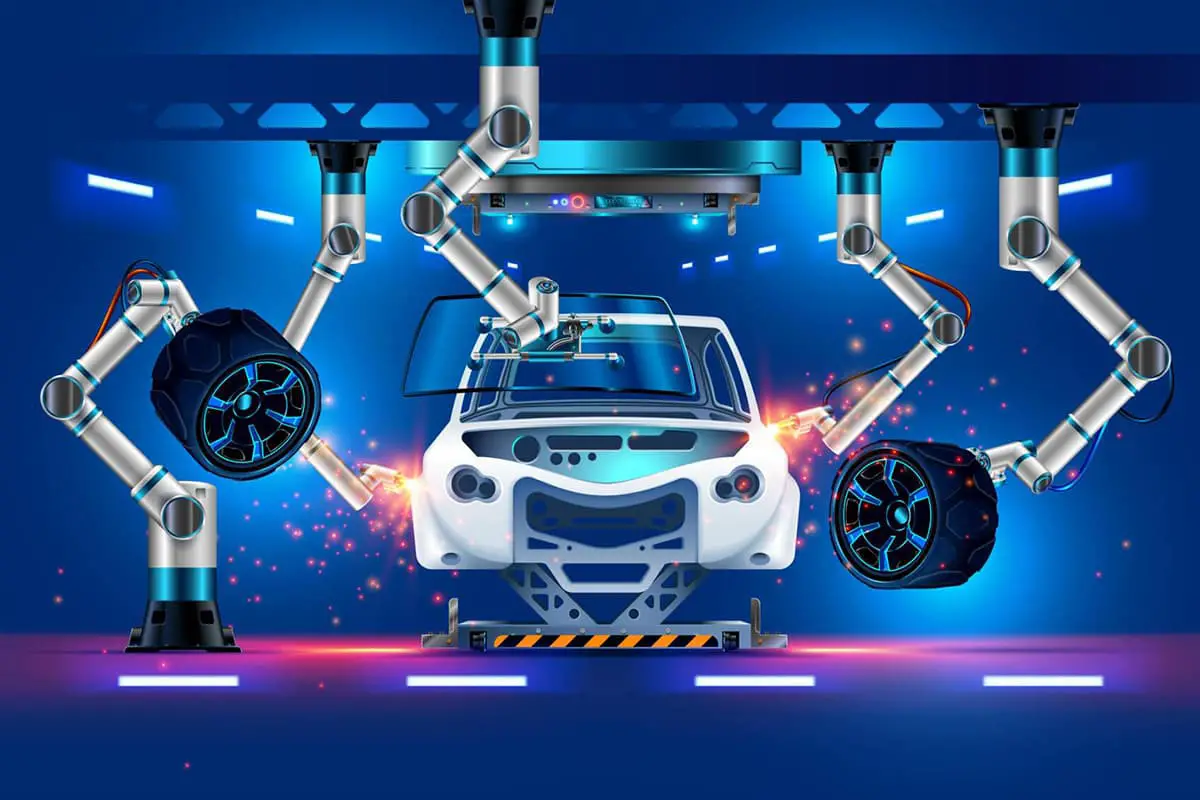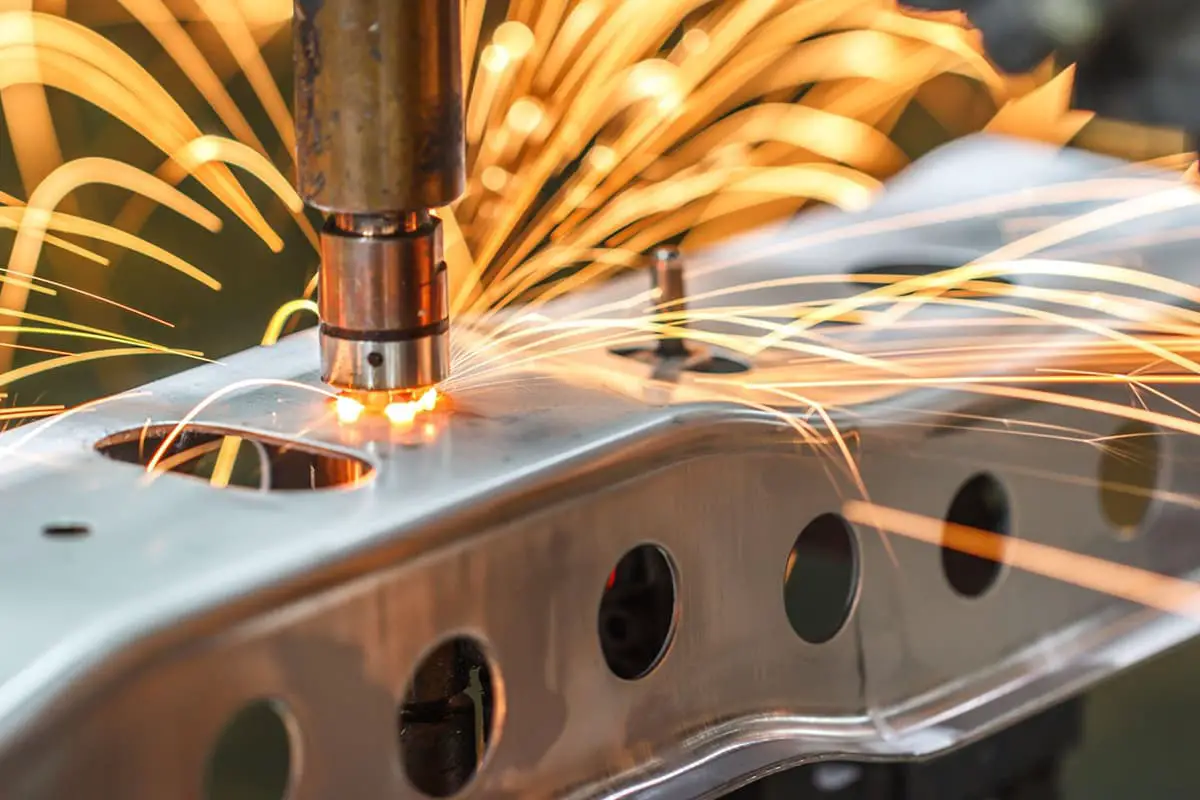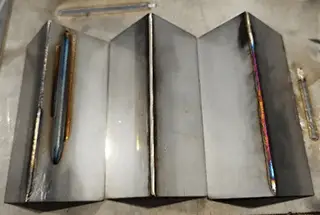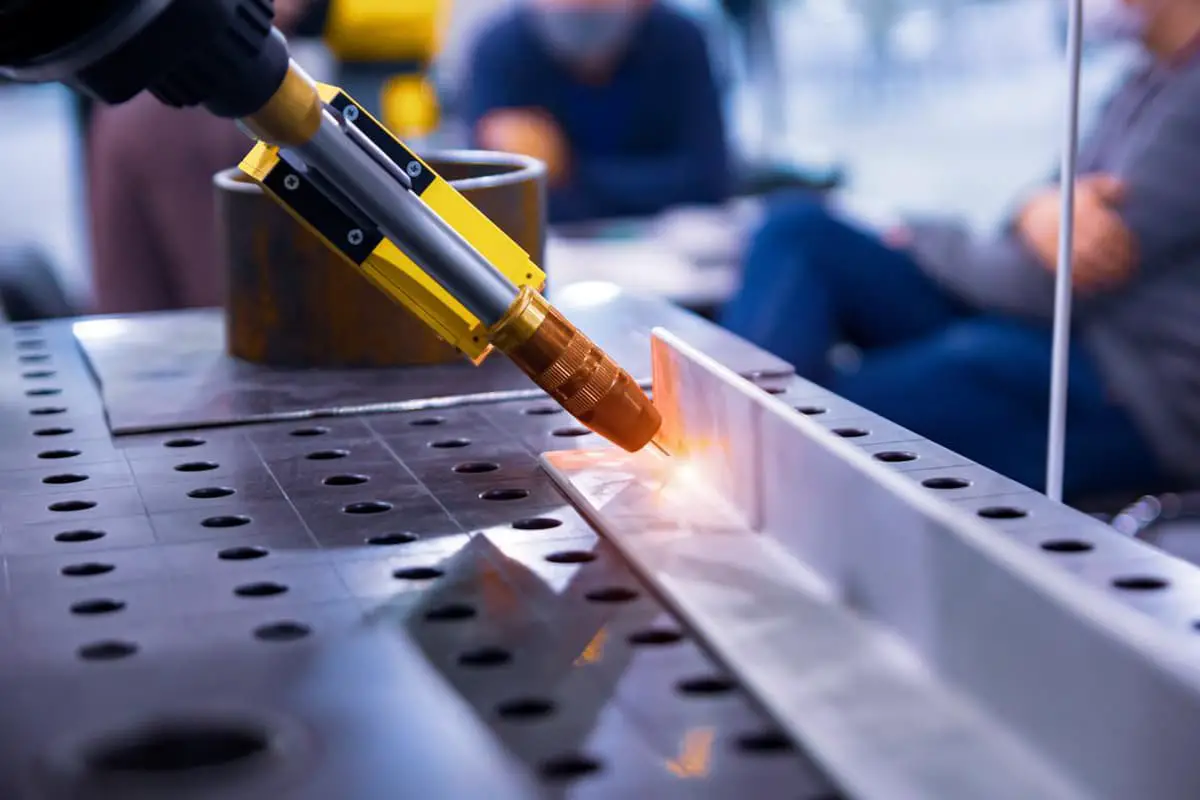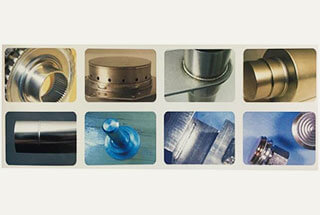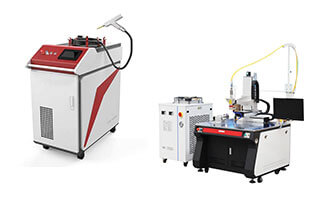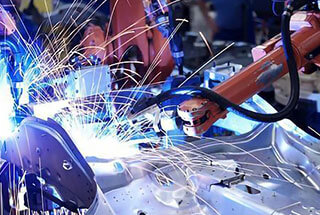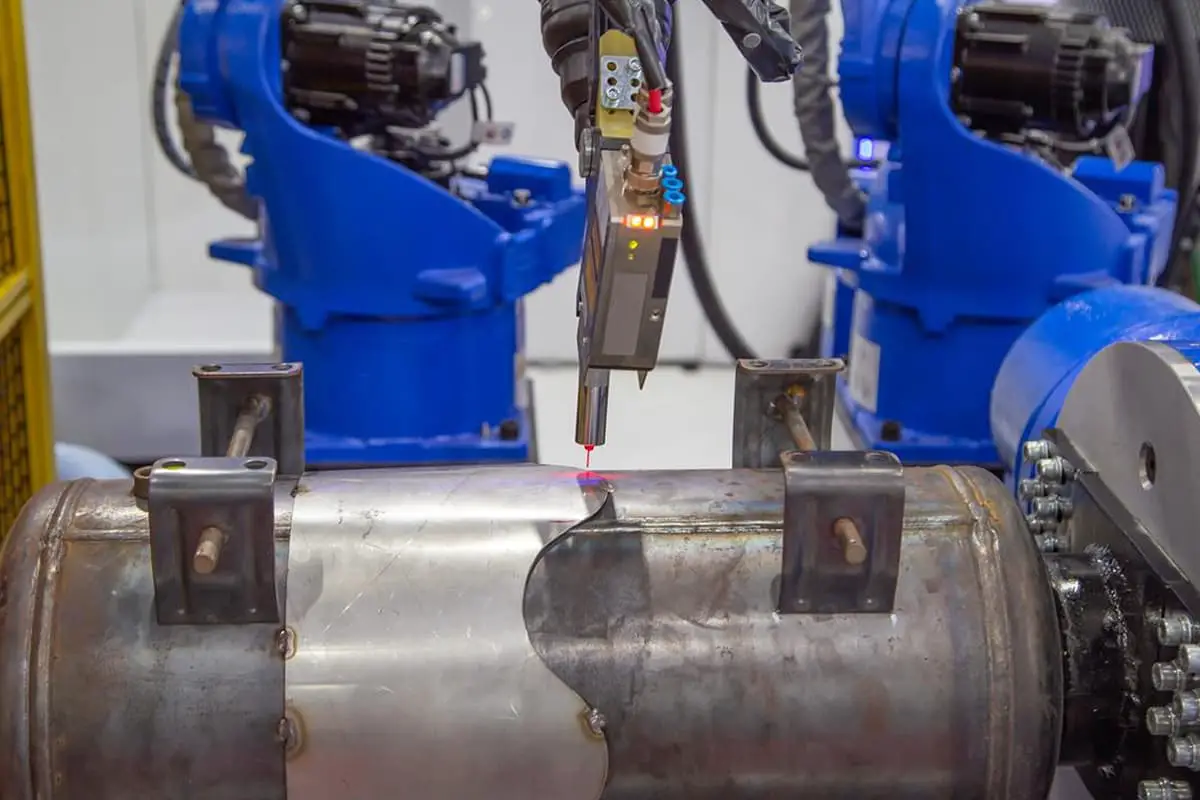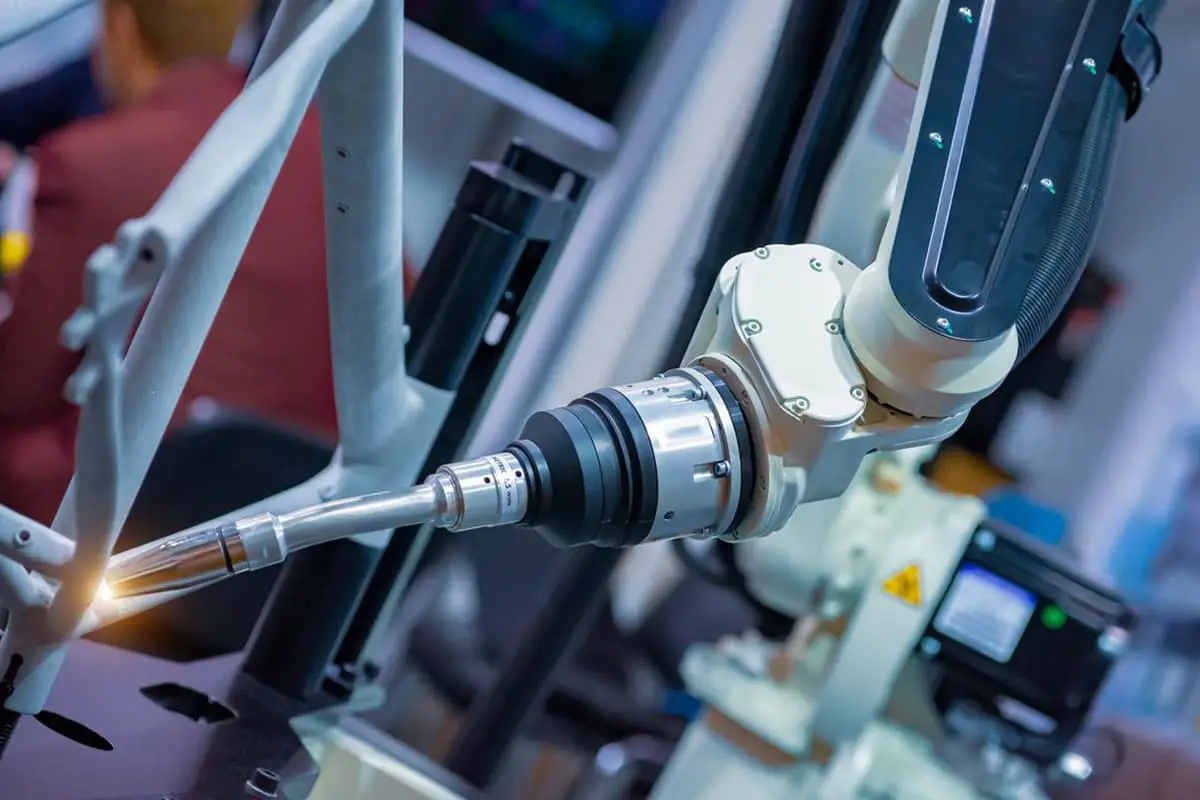
In the world of welding, choosing the right method can significantly impact efficiency and quality. Laser welding and TIG (argon arc) welding each offer unique benefits and drawbacks. Laser welding excels in speed, precision, and automation, making it ideal for intricate, high-volume applications. On the other hand, TIG welding is renowned for its versatility and ability to handle various metals with minimal distortion. This article explores these differences, helping you understand which welding technique best suits your needs and applications. Dive in to discover how these methods compare in terms of cost, efficiency, and practicality.
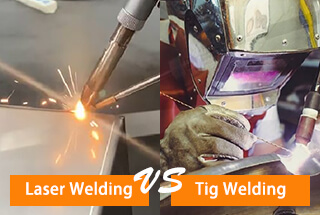
In brief, laser welding involves melting the surface material of one workpiece with a laser and joining it with another workpiece made of the same material.
Laser welding is commonly utilized for welding metals or thermoplastics.
Various types of lasers can be employed for this welding process.
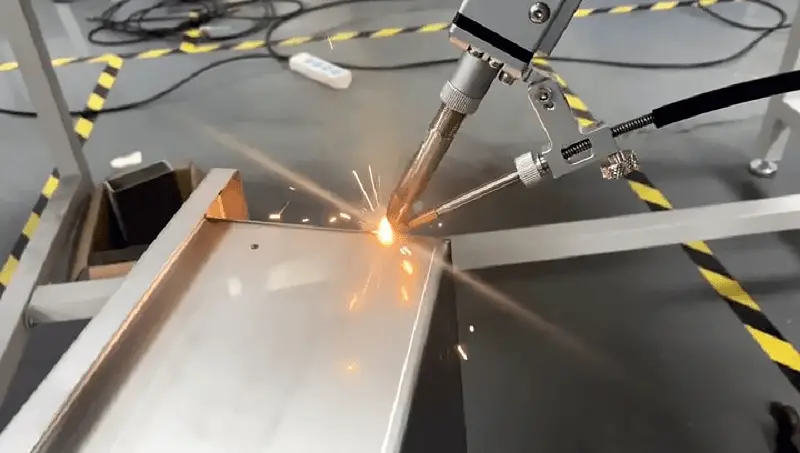
The earliest applications of laser welding included solid-state lasers, such as Nd:YAG, and gas lasers, such as CO2 lasers, which are still widely used today.
A laser is simply a highly concentrated beam of light that delivers significant energy.
The high power density of lasers allows them to melt the workpiece material in a controlled manner.
By exposing the material to the high-energy laser beam, the surface molecules gain enough energy to become more fluid.
When the excited state molecules of the same substance come into contact and transition to a lower excited state simultaneously, they solidify and form molecular bonds.
Until the late 1990s, laser welding, like other laser-based technologies, was mainly used in laboratories and research institutions.
During this time, the concept of additive manufacturing, particularly 3D printing, gained popularity.
While 3D printing using plastic resin or filament has been developed, there are few effective methods for applying the same process to metal.
The advent of laser welding technology has made the connection of powder metal as a raw material fast and highly automated.
The widespread use of 3D printing has also spurred the development of laser welding technology, elevating this once experimental technology to a key player in the modern manufacturing industry.
The laser possesses extremely high energy, which when directed at the workpiece, melts the irradiated portion, serving as the foundation of laser welding technology.
It’s important to note that the laser is also a form of light, so the surface of the workpiece should not be too smooth to reduce laser reflection.
The laser only targets one point of the workpiece, causing that area to reach a high temperature and melt.
Once the laser action is stopped, the locally melted metal solidifies quickly.
Laser welding can be classified into pulse laser welding and continuous laser welding based on the laser beam output mode.
Additionally, laser welding can be divided into thermal conductivity welding and deep penetration welding based on the characteristics of the weld formation.
The former, utilizing low laser power, long molten pool formation time, and shallow melting depth, is mostly used for small part welding.
The latter, with high laser power density and fast metal melting speed in the laser radiation area, results in strong vaporization as the metal melts.
Laser welding can achieve welds with deep penetration and large depth-to-width ratios, up to 12:1.
During laser welding, the laser injects heat into the material through the spot, and the material’s temperature rise rate is very rapid.
The material deep below the surface can reach a high temperature in a short amount of time.
The penetration depth of the weld can be controlled through adjusting the laser’s power density.
The laser beam can be redirected using mirrors, enabling it to weld parts of the workpiece that are difficult to access through conventional welding methods.
A laser welding system typically employs a 1 to 4 kW CO2 laser.
The laser beam generated by the laser is transmitted through the light guide system and reflected and focused by a parabolic mirror.
The high-temperature beam, reaching 5000 to 20000 K near the focus, is emitted from the nozzle and directed at the metal plate joint, instantly melting the metal material.
As the laser beam moves forward, the molten metal solidifies, forming a weld and connecting the two separate metal plates as one.
Gas lasers can be used for continuous welding, making them suitable for welding low-alloy steel, stainless steel, nickel, titanium, aluminum, and other metals and alloys with thicknesses between 0.12 and 12mm.
With solid-state laser welding, the small output energy (1 to 50 J) and short pulse laser duration (<10 ms) allow for solder joints as small as tens of microns.
It can be used for spot welding and continuous spot welding of metal foils with a thickness less than 0.5mm, as well as butt welding of metal wires with a diameter less than 0.6mm.
It is also suitable for welding miniature, precise, densely arranged, and heat-sensitive valuable instrument components.
The joint type in laser welding is the same as in traditional welding.
Resistance welding is used for welding thin metal products by clamping the welded workpiece between two electrical electrodes, melting the surface in contact with the electrical current to create a weld based on the hot resistance of the workpiece.
This welding method may cause the product workpiece to deform, as it is welded on both sides of the connector.
In contrast, laser welding is only carried out on one side, thus minimizing the risk of deformation.
Resistance welding requires frequent maintenance to eliminate metal oxides and other materials adhered to the product workpiece.
On the other hand, when laser welding a reinforcement lap connector made of thin metal material, it does not touch the product workpiece.
Moreover, laser welding allows light to enter areas that cannot be welded by basic welding, resulting in faster welding speed.
The use of non-power consuming and maintenance-free steam for welding thin product workpieces is common.
However, the welding rate of this method is relatively slow, and the thermal bonding is much larger than laser welding, which can easily cause deformation.
The arc welding speed is similar to that of argon arc welding, but it is slower than that of argon arc welding.
Electron beam welding relies on a beam to accelerate high-energy, high-density electrons to collide with the product workpiece. The main drawback of this method is that it requires high vacuum conditions to avoid electron scattering.
The machinery and equipment involved are complex, and the specification and appearance of the weldments are limited by the vacuum system.
Additionally, the installation quality of butt weldments must be strictly controlled.
Non-vacuum pump electron beam welding is possible, but the welding quality is often poor due to electron scattering, which affects the overall effectiveness.
Moreover, electron beam welding may have magnetic deviation and X-ray problems. The electronic devices may be affected by the electromagnetic field deviation, leading to malfunction or damage.
To address this issue, workpieces for electron beam welding products should be welded within a magnetic field. In contrast, laser welding does not require a vacuum system or demagnetization of the product workpiece before welding.
It can be performed in the air, making it suitable for operation on a production line or for welding permanent magnet materials.
When examining the advantages and disadvantages of laser welding technology, it is useful to compare it with traditional welding methods such as gas shielded welding and argon arc welding.
These classic welding methods are still widely used in the manufacturing industry, and it will take some time for laser welding to fully replace them.
Laser welding is particularly suitable for automated manufacturing. While it has been extensively used in 3D printing, it can also be applied in automating traditional welding tasks.
Automatic welding provides several benefits for manufacturers, such as increased convenience, higher product precision, and more stable quality.
Automated systems are also much faster than manual welders, and traditional welding still requires a large number of welders.
Wide range of compatible materials
In traditional welding, such as argon arc welding, converting from one material to another involves adjusting the flame temperature and arc strength.
The working principle of the laser is similar in this regard. The laser can adjust its power output to suit various materials, giving it a distinct advantage.
With preset parameters for different materials, laser welding is more convenient than other welding methods.
Thanks to its high power density, laser welding can weld materials that are challenging to weld using other technologies.
Laser welding can be applied to a wide range of materials, including super metals such as titanium and carbon steel.
In terms of power density, the only welding technology that can match laser welding is electron beam welding.
Fast heating rate
Another advantage of high power density lasers is their ability to melt materials faster than flame or arc welding. This results in faster welding speeds and stronger welds.
The depth of penetration in laser welding can be controlled by adjusting the power output of the laser.
Laser pulses can be applied to almost any material to prevent damage to both materials and equipment.
Complex geometry joints can be welded
One unique feature of laser welding is its ability to weld at a longer distance than other welding methods.
Laser-welded joints do not need to be in close proximity to the material being welded to provide the energy required for welding.
This provides more space for the operation of the workpiece and makes it possible to weld workpieces with complex geometries.
High safety
Laser welding machines are typically fully automatic and have a closed workspace. This means that personnel are no longer exposed to high temperatures and particles during welding.
On this point alone, a laser welding machine is worth investing in. Any technology that can improve workplace safety and keep people away from unnecessary hazards is worth considering.
There is a risk of cracking when the metal cools rapidly.
Anything that heats up quickly also cools down quickly. The same is true for laser welding. The localized transmission of energy through the laser means that the joints can be welded quickly.
However, this also means that the heat in the weld is dissipated rapidly through the material, which leads to significant thermal stress accumulation.
Only some materials can avoid cracking or damage due to this.
Carbon steel is a typical example, as it is prone to embrittlement when cooled too quickly.
The one-time investment of equipment cost is high
This may be the biggest obstacle to the wide application of this technology – the price of laser welding machines is expensive. This is more obvious than gas shielded welding and argon arc welding.
Traditional welding requires skilled welders, but does not necessarily require expensive equipment.
Laser welding overturns the idea that equipment is expensive, but operation does not require too many skills.
With the large-scale production, laser welding equipment will mature with the industrial chain. Like the early LED lighting industry, the price will become more affordable and widely used.
Traditional welding may complete its mission and become a part of history.
Tungsten inert gas shielded welding is referred to as TIG welding. It is a welding method that uses the arc generated between the tungsten electrode and the workpiece to heat and melt the base metal and filler wire (if filler wire is used) under the protection of an inert gas.
During welding, the protective gas is continuously sprayed from the nozzle of the welding gun to form a gas protective layer around the arc, isolating the air and preventing its harmful impact on the tungsten electrode, molten pool, and adjacent heat-affected zone, in order to obtain high-quality welds.
The shielding gas can be argon, helium, or an argon-helium mixture.
Related reading: MIG vs TIG Welding
Tungsten inert gas arc welding, also known as TIG welding, is an arc welding method that uses external gas as a protective medium. Its advantages include good visibility of the arc and molten pool, and easy operation.
Additionally, there is little to no slag produced, which eliminates the need to remove slag after welding. However, special windproof measures need to be taken during outdoor operations.
Gas shielded welding can be divided into two types based on whether the electrode is melted during the welding process: non-melting electrode (tungsten electrode) gas shielded welding and melting electrode gas shielded welding.
The former includes tungsten inert gas welding, plasma arc welding, and atomic hydrogen welding, with atomic hydrogen welding being rarely used in production at present.
In special applications, a small amount of hydrogen can be added.
Tungsten argon arc welding is commonly referred to as argon arc welding, and tungsten helium arc welding is referred to as helium arc welding.
Due to the high price of helium, tungsten argon arc welding is more widely used in industry than helium arc welding.
TIG welding is divided into manual welding, semi-automatic welding, and automatic welding according to the operation mode.
During manual TIG welding, the movement of the welding gun and the addition of filler wire are completely operated by hand.
During semi-automatic TIG welding, the movement of the welding gun depends on manual operation, but the filler wire is automatically fed by the wire feeding mechanism.
During automatic TIG welding, if the workpiece is fixed and the arc moves, the welding gun is installed on the welding trolley.
The walking of the trolley and the filler wire can be added by cold wire or hot wire.
Hot wire refers to increasing the deposition speed.
In some cases, such as sheet welding or backing pass, it is sometimes not necessary to add filler wire.
Among the above three welding methods, manual TIG welding is the most widely used, while semi-automatic TIG welding is rarely used.

For some important thick-walled components, such as pressure vessels and pipes, made of black and non-ferrous metals, TIG welding is sometimes used to ensure high welding quality.
Tungsten argon arc welding is used in root penetration weld bead connection, all position welding, and narrow gap connection.
| Category / mode | Argon arc welding | Laser welding |
| Deformation | Easy to deform | Slight deformation or no deformation |
| Aesthetic degree | Unsightly and needs repeated polishing | The appearance is smooth and can be treated slightly |
| Weld spot size | Large weld spot | Fine weld spot and adjustable spot |
| Shielding gas | Argon | Argon |
| Heat input | High heat | Low heat |
| Machining precision | Commonly | Precise |
| Processing hours | Time consuming | Short time consuming |
| Security | Ultraviolet light, radiation hazard | T exposure to light, almost no harm |
| Perforation degree | Easy perforation | Not easy to pierce |
| Degree of automation | Very low | Commonly |
The spot welding machine and automatic welding are simply used for classification.
The welding operation of a laser spot welding machine is simple and fast.
The operation of non-melting electrode argon arc welding is relatively difficult and requires consumables, so the welding speed is relatively slow.
The welding speed of an automatic laser welding machine and an automatic MIG welding machine is not very different because MIG welding still needs molten wire, so the welding speed will be slightly slower than that of an automatic laser welding machine.
A laser welding machine is used to melt weld materials using a laser, but laser deep welding is not its strong suit. It’s not that laser deep welding is not good, but the cost is too high.
For example, if you need to weld a 2.0mm stainless steel plate, you would need to use a 500W optical fiber transmission laser welding machine at a minimum, and the price would be about 100000.
While a general argon arc welding machine can weld such a thick stainless steel plate, the price is only a few hundred, and automatic argon arc welding costs twenty or thirty thousand.
Therefore, it is not cost-effective to use a laser welding machine if deep penetration is required for welding thick materials.
The welding appearance of a laser spot welding machine is more beautiful than that of argon arc welding with a non-melting electrode.
The welding appearance of an automatic laser welding machine is similar to that of an automatic argon arc welding machine, and the laser welding of thin materials is better.
In terms of welding firmness, as long as the power of the laser welding machine is large enough, it can weld firmly, which is comparable to argon arc welding.
However, the heat of the laser welding machine is more concentrated, and the thermal deformation of the material is smaller, so the laser welding machine has more advantages in welding thin-walled materials.
In terms of precision, the precision of the laser welding machine is higher, and subsequent welding using a laser welding machine basically does not require processing, which saves time and effort.
The operation of a laser spot welding machine is much less difficult than that of non-melting electrode argon arc welding.
In fact, argon arc welding requires skill and is prone to errors, but laser welding is much simpler, and the operation is more straightforward.
Even if there are errors, they are not significant.
The operation of automatic laser welding and automatic argon arc welding is not difficult. Both of them require computer control.
For welding thin-walled materials, it is better to use a laser welding machine than to weld thick materials.
If there are no high requirements for welding speed and accuracy, it is more cost-effective to use an argon arc welding machine.
However, if cost is not a concern, it is better to use a laser welding machine.
Compared with traditional arc welding, handheld laser welding machine can save about 80% ~ 90% of electric energy and reduce the processing cost by about 30%.
Laser handheld welding can complete the welding of dissimilar steel and dissimilar metals. It has a fast welding speed, small deformation, and a small heat-affected zone.
The welds should be beautiful, flat, and free from or with very few pores and contamination. Hand-held laser welding machines can perform micro open parts and precision welding.
During laser hand-held welding, the heat input is low, and the deformation of the workpiece is small, which can result in a beautiful welding surface without or with only simple treatment (depending on the required welding surface effect).
Hand-held laser welding machines can greatly reduce the labor cost of the extensive polishing and leveling process.
Advantages of handheld optical fiber welding machine over traditional argon arc welding
| Item | Handheld optical fiber laser welding | Traditional argon arc welding |
| Employment cost | The operation is simple, ordinary people start it in half an hour, and the employment cost is low | Recruitment is difficult, wages are high and employment costs are high |
| Personal injury | Pure single wavelength beam energy, low indirect radiation, only need protective glasses to filter strong light | Occupational disease, serious physical injury |
| Efficiency | The speed is fast, the efficiency can reach 3-8 times that of argon arc welding, and the linear welding speed can reach more than 10cm / s | Slow speed and low efficiency |
| Thermal deformation | Energy concentration and little influence of thermal deformation | Large thermal influence and deformation |
| Weld quality | The weld is fine and beautiful, the solution pool is deep and the strength is high | The weld is rough and irregular, which needs secondary grinding and polishing |
| Weldable material | Very thin materials can be welded, such as 0.05mm stainless steel | Do not weld too thin material |
| Learning difficulty | Ordinary people can get started in half an hour, and inexperienced women workers can also get started | Professional welders are required, and the technical threshold is high |
| Consumables | It can be welded with filler wire or without welding wire | Consumables, welding wire required |
| Weld damage | The weld is beautiful and fine, the solution pool is uniform and the consistency is good. | It is easy to weld through if there are pores |
Compared with traditional argon arc welding, handheld optical fiber welding machine has disadvantages
| Item | Handheld optical fiber laser welding | Traditional argon arc welding |
| Gap filling ability | Weak, our company adopts swing welding, which can fuse the gap of 0.3-0.5mm at most, and adopts wire feeding welding, which can fuse the gap of more than 1mm at most | Strong, insensitive to workpiece gap, large gap can be welded through filler |
| Equipment price | Expensive equipment | Cheap equipment |
| Volume weight | Relatively large volume and weight | Small size and light weight |
| Thick plate welding | It is not conducive to the welding of thick plate materials. The penetration capacity of 1000 Watt molten pool is about 3mm and 1500 Watt is about 4mm. | Thick plate material welding has advantages, which can accumulate and fill the welding solution pool, and can adapt to the welding of thicker materials |
Advantages of handheld optical fiber welding machine over traditional argon arc welding
| Item | Handheld optical fiber laser welding | Traditional argon arc welding |
| Employment cost | The operation is simple, ordinary people start it in half an hour, and the employment cost is low | Recruitment is difficult, wages are high and employment costs are high |
| Personal injury | Pure single wavelength beam energy, low indirect radiation, only need protective glasses to filter strong light | Occupational disease, serious physical injury |
| Efficiency | The speed is fast, the efficiency can reach 3-8 times that of argon arc welding, and the linear welding speed can reach more than 10cm / s | Slow speed and low efficiency |
| Thermal deformation | Energy concentration and little influence of thermal deformation | Large thermal influence and deformation |
| Weld quality | The weld is fine and beautiful, the solution pool is deep and the strength is high | The weld is rough and irregular, which needs secondary grinding and polishing |
| Weldable material | Very thin materials can be welded, such as 0.05mm stainless steel | Do not weld too thin material |
| Learning difficulty | Ordinary people can get started in half an hour, and inexperienced women workers can also get started | Professional welders are required, and the technical threshold is high |
| Consumables | It can be welded with filler wire or without welding wire | Consumables, welding wire required |
| Weld damage | The weld is beautiful and fine, the solution pool is uniform and the consistency is good. | It is easy to weld through if there are pores |
Disadvantages of handheld optical fiber welding machine over traditional argon arc welding
| Item | Handheld optical fiber laser welding | Traditional argon arc welding |
| Gap filling ability | Weak, our company adopts swing welding, which can fuse the gap of 0.3-0.5mm at most, and adopts wire feeding welding, which can fuse the gap of more than 1mm at most | Strong, insensitive to workpiece gap, large gap can be welded through filler |
| Equipment price | Expensive equipment | Cheap equipment |
| Volume weight | Relatively large volume and weight | Small size and light weight |
| Thick plate welding | It is not conducive to the welding of thick plate materials. The penetration capacity of 1000 Watt molten pool is about 3mm and 1500 Watt is about 4mm | Thick plate material welding has advantages, which can accumulate and fill the welding solution pool, and can adapt to the welding of thicker materials |
Table 3: handheld laser welding has obvious advantages over traditional argon arc welding
| heat effect | subsequent treatment | requirements for plates | requirements for workers | welding speed | availability of consumables | |
| Argon solitary glow | great | need | Thickness > 1mm | High, usually requires professional technicians (assuming that the salary of professional technicians is 10000 yuan / month) | slow | Yes (flux, welding wire) |
| Handheld laser welding | Very small | unwanted | Thickness < 3mm | Low, ordinary workers can get started after simple training (assuming that the salary of ordinary workers is 4000 yuan / month) | It is 2-10 times that of argon arc welding | nothing |
Nowadays, there are still some disputes between traditional argon arc welding and laser welding. The pace of technological advancement is unpredictable.
If argon arc welding operators, who have been working for more than ten years, start using laser welding, they may face some difficulties and may not be suitable for the new technology.
Both welding methods have their own advantages and disadvantages. Depending on the current industrial demand, we should choose the appropriate welding method.

First of all, speaking of cost, the price of a traditional argon arc welding machine is about 2000-5000 yuan, which can be accepted by large and small factories.
The gun head is small, light and compact, and easy to carry, making it convenient for work on-site.
However, the welding speed is slow, the efficiency is low, the heat affected area is large, the solder joint is large, and it is prone to deformation.
In addition, the requirements for operators are high, and they must undergo professional training and have long-term practical experience.
There is also a certain amount of radiation damage to the human body, which makes it difficult to recruit welders. Experienced welders are particularly difficult to find.
On the other hand, the relative price of a laser welding machine is high, which is about 50,000-100,000 yuan, and the machine is large in size. It is suitable for batch processing at specific points.
The welding speed is fast, and the efficiency is high, which is 5-10 times that of traditional welding.
The spot size is adjustable, and the welding effect is uniform and beautiful without deformation. The operation is simple, with low requirements for welders who can be trained in about ten minutes.
Through our comparison, I believe you have a good understanding of laser welding and argon arc welding.
Which would you choose?
Please leave a message in the comment area and let us know what you think.

